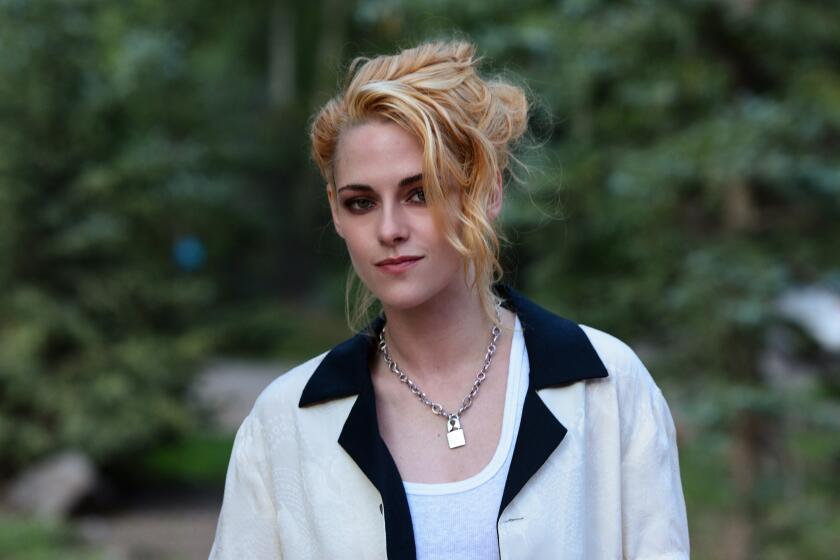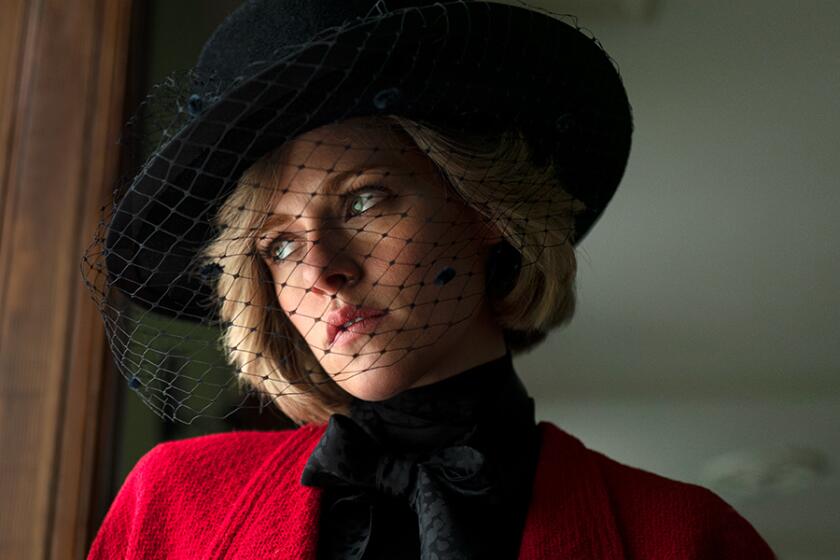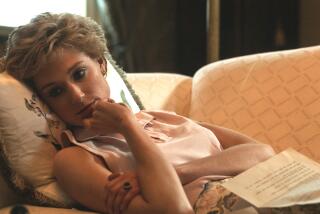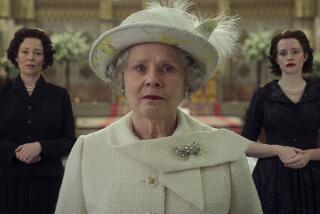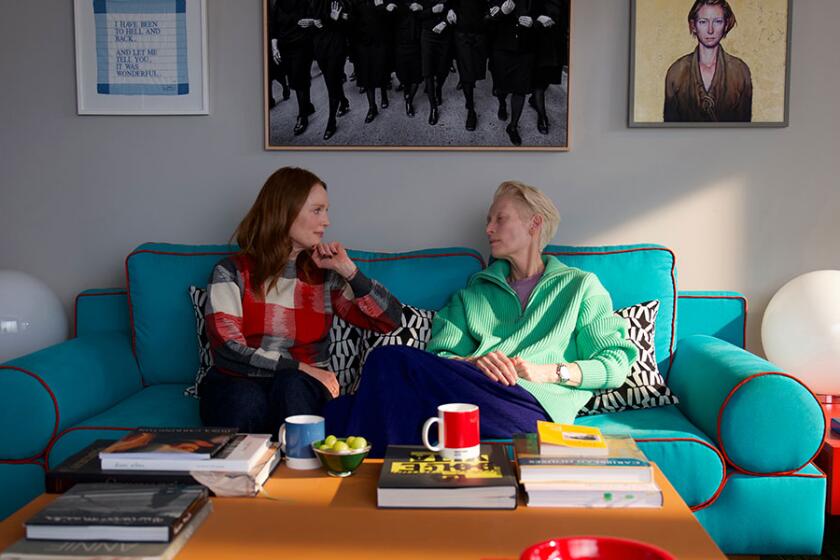Why are we endlessly fascinated with Princess Di? Here’s what ‘Spencer’ gets right and wrong
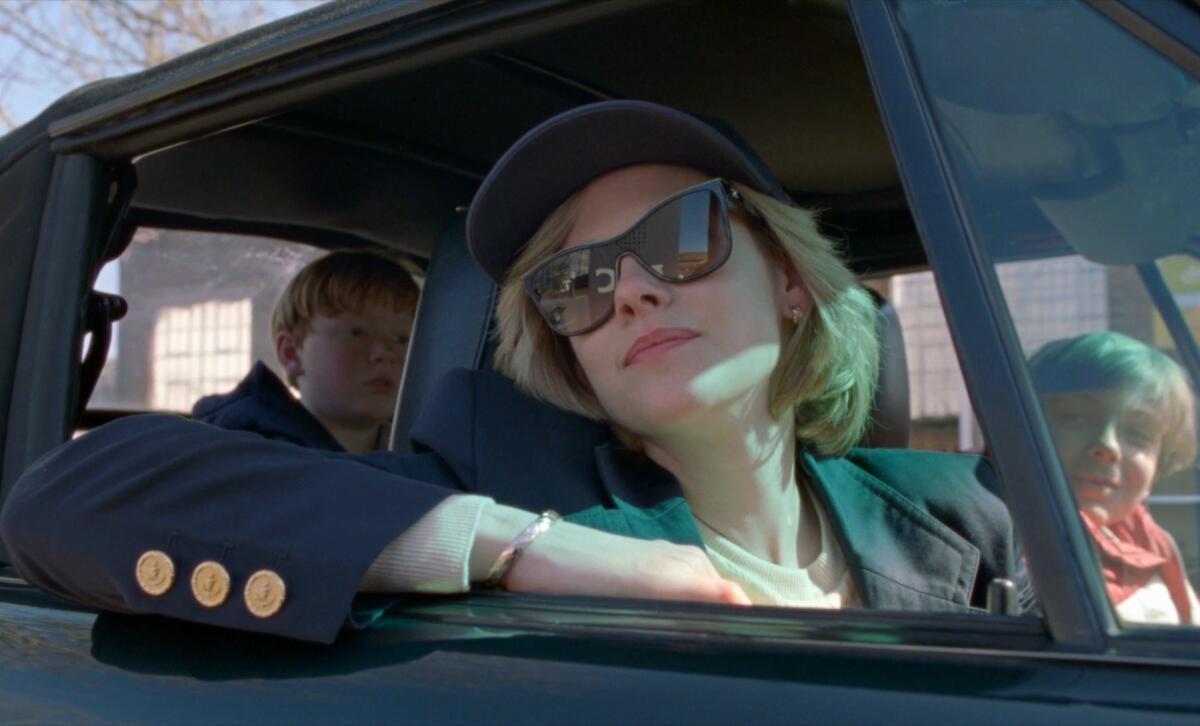
- Share via
More than 23 years after her death, Princess Diana is newly ubiquitous in pop culture.
In the last year, we’ve gotten the long-awaited Diana season of “The Crown,” which swept the Emmys in September; a Diana musical on Broadway (and Netflix), which appears less likely to win awards; fresh controversy over Diana’s 1995 tell-all conversation with Martin Bashir; Oprah Winfrey’s equally jaw-dropping interview with the Duke and Duchess of Sussex that felt like history repeating itself.
Now we’ve got “Spencer,” a biopic (of sorts) following the former Lady Diana Spencer as she unravels over the course of a particularly miserable Christmas holiday at Sandringham, the queen’s Norfolk estate, in 1991. It is directed by Pablo Larraín, who with his film “Jackie” showed he has a knack for shedding new light on lonely yet impossibly privileged women who’ve been widely mythologized.
And, well, it certainly is a new version of Diana — one that already has monarchists in the U.K. clutching their pearls (if not spitting them out into their soup).
Kristen Stewart and Pablo Larraín share secrets of their collaborative process making the unconventional “fable” “Spencer,” inspired by Princess Diana.
Perhaps it’s a good thing to be ruffling so many feathers? And why do people care so much about Diana’s image decades after her death? Times writers and unofficial royal correspondents Meredith Blake and Mary McNamara weigh in below.
MB: Welcome back, Mary. The last time we did one of these conversations, we were talking about a very English actress playing a quintessentially American character. Now we’ve got an American actress portraying the ultimate Englishwoman: Kristen Stewart as the late Princess Diana.
I will admit I came to “Spencer” a skeptic: I wasn’t sure the laidback Stewart, a self-described L.A. scumbag best known for playing a teen horny for a vampire, could pull off the airs of an earl’s daughter who graduated from a Swiss boarding school. I was also concerned by reports that the ghost of Anne Boleyn appeared in the movie.
And more than anything, I wondered if there was anything else one could possibly say about Diana, who was already one of the most exhaustively chronicled figures of the 20th century, even before this latest bout of Dianamania. For crying out loud, the last season of “The Crown” ended with Diana spending a miserable Christmas holiday at Sandringham, and Stewart used the same dialect coach as Emma Corrin.
But I am happy to say I was wrong. “Spencer” is a surreal, psychologically astute portrait that offers remarkable insight into Diana’s many contradictions — “a fable from a true tragedy,” according to the opening title card, rather than a feature-length Wikipedia entry. Stewart carries the whole thing on her shoulders and plays Diana with a surprising amount of dry humor — I laughed out loud when she told her dresser to leave her alone so she could masturbate.
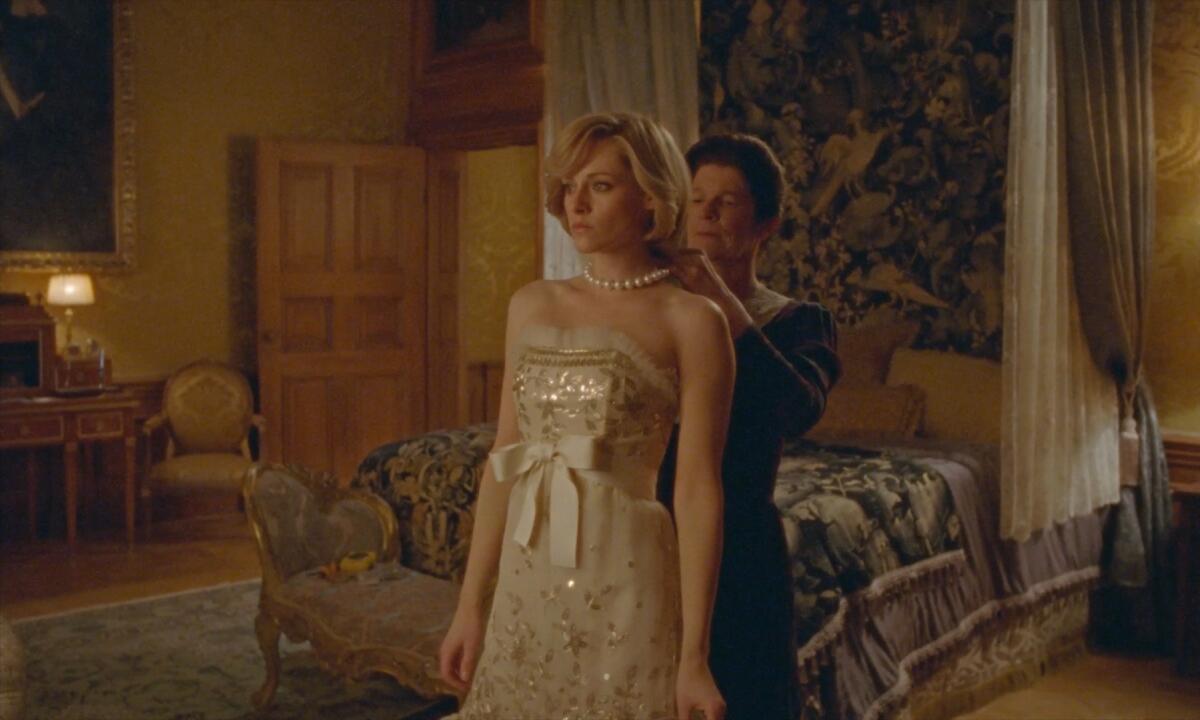
Larraín seizes on some of the more ludicrous royal family customs — like the military convoy that brings all their food to the estate, or the supposedly “fun” tradition of weighing everyone in the family to make sure they’ve indulged themselves thoroughly over the holiday, an obvious trigger for the bulimic Diana — but never gets bogged down in tedious exposition.
There are surely more historically accurate depictions of Diana and the Windsor clan, but none that more effectively capture the suffocating privilege and constant surveillance the princess endured at the height of her fame.
Mary, what were your expectations going into the movie? And what did you ultimately think of it?
Also, can we talk about the outfits?
Kristen Stewart felt Princess Diana’s presence while making “Spencer,” a role that made her feel “taller than I’ve ever felt.”
MM: Only after we talk about the bulimia. In “Spencer,” as in the Apple TV + series “Physical,” self-induced vomiting gets a lot of screen time, and in both cases, I have been impressed with how it is depicted: Not as some kind of bizarre dieting technique but as a fear-born compulsion and an attempt to exert control. There has been some criticism of Larraín’s decision to depict Diana vomiting as often and as graphically as the film does, but for me, it grounded all the gothic horror aspects of the film in reality.
“Spencer” is certainly one of the best examples of an anti-holiday film I’ve ever seen. It is thoroughly specific to the Windsors, re-created here as nonfestive to the point of robotic. With the exception of Charles (Jack Farthing) hissing criticism at his wife, few of the adults speak to each other; the dinner scenes are like something out of Madame Tussauds. But there is also a merciful universality to it; Diana is not the only person to dread the holidays, with their obligatory rituals and enforced gathering of people who clearly are not at all delighted to be together.
I say merciful because I, like you, am more fascinated by the fascination with Diana than with Diana herself. I came of age in the early days of the royal couple, am old enough to remember the press going mad over “Shy Di” and young enough to have, at the time, envied the whole “princess in a fairy tale” storyline. And that, I suppose, is what continues to fuel the fascination. Diana’s story is, for better and worse, the ultimate proof that glamour is not the same as happiness; indeed, it is an art of dissemblance.
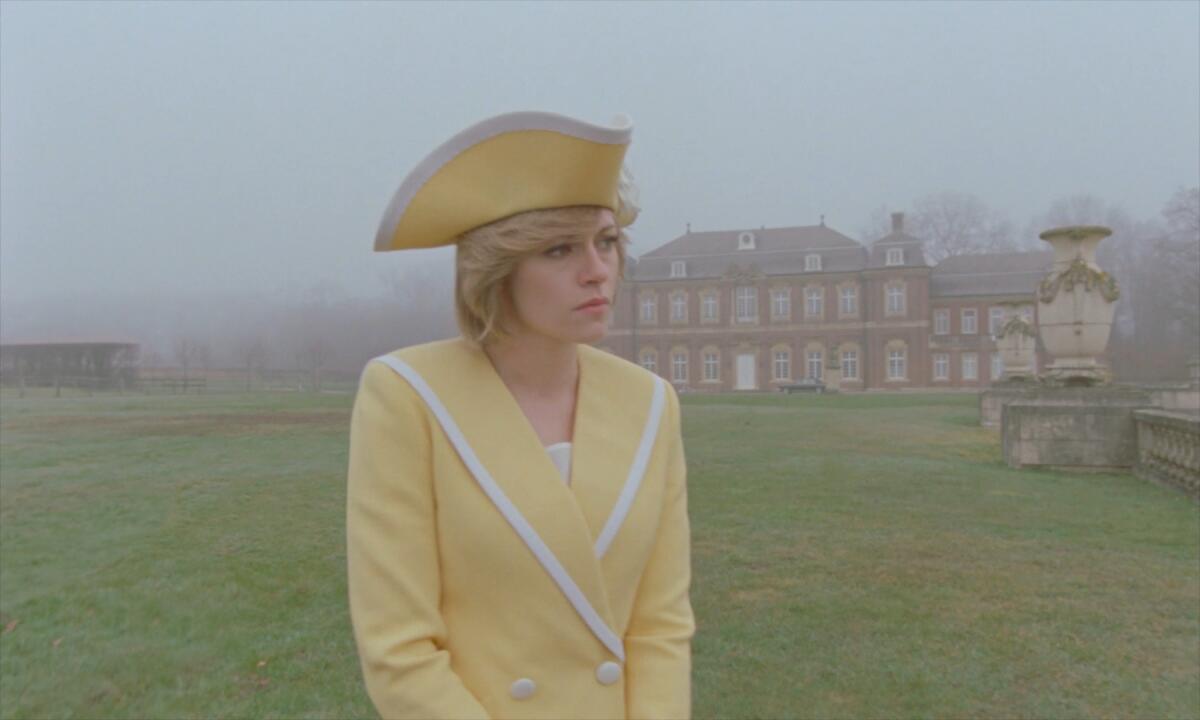
I’m not sure how often we need Diana to illustrate that image is not reality, but apparently, at least twice more. (The next season of “The Crown” will follow Diana’s ever-more tragic journey.) Stewart’s performance is, obviously, the reason to watch “Spencer,” and I think we’d all be lying if we didn’t admit that part of the interest stems from Stewart’s own Diana-like issues. The early fame, the media-documented love affair with Robert Pattinson, the swings in public opinion — even outside her artform, Stewart has been, and at times placed herself, in the middle of public attention. Including the announcement of her engagement in the week before her movie opens.
But what I liked best about Stewart’s performance was her refusal to sanctify Diana. Her princess is just as bratty and stubborn as she is dismissed and mistreated. With the lovely exception of her relationship with her sons, she seems unwilling to live within the specific reality she has chosen — an arranged marriage with a future monarch — and the more universal one — turns out her husband loves someone else. And even for the sake of her sons, she is incapable of doing what many have done — grit your teeth and get through Christmas with your horrible in-laws the best you can so the kids enjoy it.
MB: Mary, you’ve made me rethink “Spencer” completely. Here I thought it was “Rosemary’s Baby” meets “Downton Abbey,” while it’s actually just a (more) nightmarish version of “The Family Stone.”
“Spencer” is no hagiography, but I think it is ultimately quite sympathetic to Diana. There’s a (completely unverifiable) theory that celebrities are emotionally stuck at the age they were when they became famous, and the Diana of “Spencer” is clearly stunted — a lonely little girl who’s spent a decade in an atmosphere of enforced coddling and pervasive scrutiny. Hence her desire to return to the house where she was raised, the way she asks her children to regulate her behavior (“Mummy, you’re being silly now”) and her compulsion to confide in the staff.
I think Larraín’s portrayal of Diana’s eating disorder is well within bounds (I actually found “The Crown” more distasteful in this regard; remember the montage of Diana bingeing and purging intercut with a Maori dance? Yikes.) It helps that the film does such a good job capturing the way Diana was both completely isolated yet never alone — constantly surveilled by the media, her husband’s family and their minions.
This is a 30-year-old woman who can barely drive herself anywhere, pick out her clothes or turn up the heat without spurring a constitutional crisis. The tags on the dresses chosen for her read “P.O.W.” — for Princes of Wales, presumably, but the other meaning certainly applies. There’s even a sign in the kitchen, where Diana likes to escape, reading: “Keep noise at a minimum. They can hear you.”
This latest English-language drama from Chilean director Pablo Larraín is an artful companion piece to his earlier “Jackie.”
One can understand why she’d need to feel control over something — anything — in such a menacing environment. (“Spencer” is not hyperbolic when it comes to this aspect of Diana’s life: The events in the film take place after Diana had already begun secretly sharing her story with biographer Andrew Morton and a few months before the infamous “Squidgygate” conversations — recorded while she was on the phone at Sandringham — became public.)
I definitely see the parallels between Diana and Stewart, who knows a thing or two about being on the other end of a telephoto lens. And Stewart, like Diana, has a bashful effect that the camera adores. But more than anything for me, this version of Diana called to mind another blond who became famous as a teen, struggled with her mental health and became a kind of captive of her own celebrity: Britney Spears. Diana in many ways set a new standard for female stardom, and we are still reckoning with what that means four decades after her engagement to Charles.
I appreciated all the subtle foreshadowing in “Spencer” — the references to walking through landmines, the lack of a security detail and the reckless driving — all of which added to the movie’s haunted feel. “Spencer” ends without a postscript, because we don’t need one to know how this story ends.
Mary, what did you make of “Spencer’s” bouts of magical realism — the ghost of Anne Boleyn stuff, in particular?
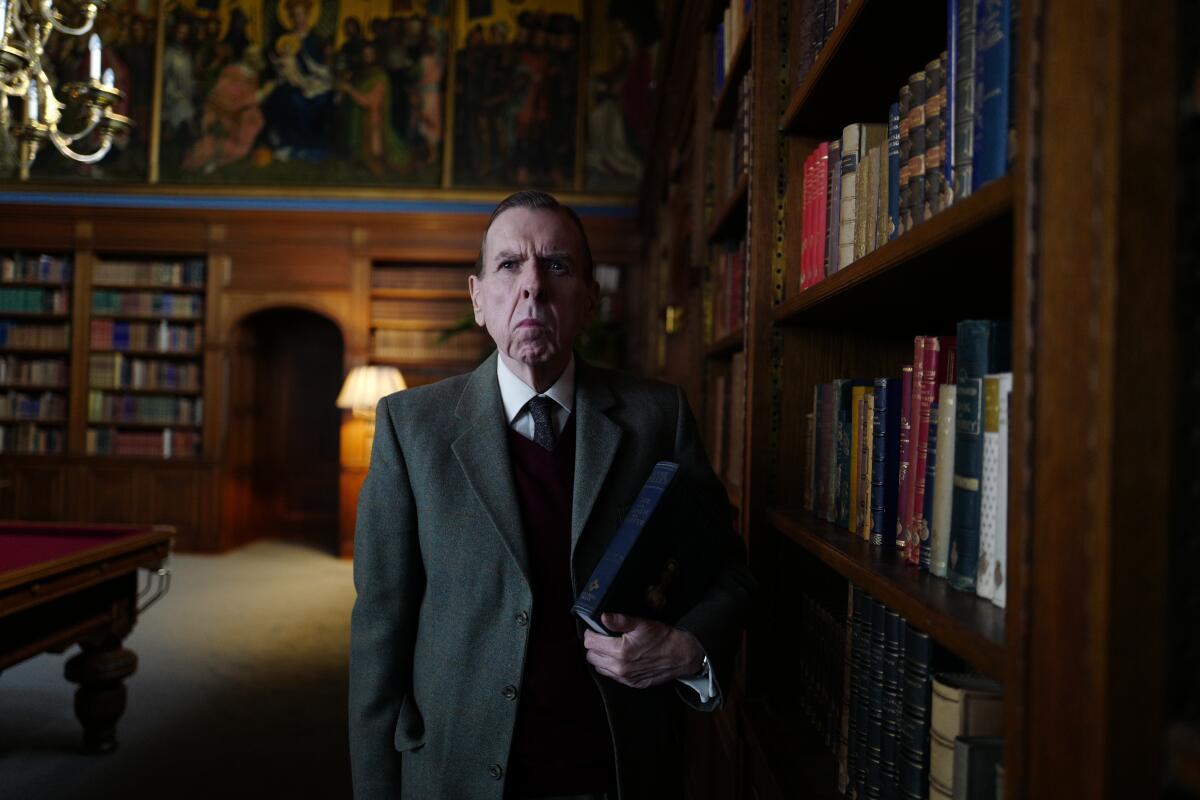
MM: Ooo, I didn’t pick up on the POW thing, though I did love how the clothes, which so many people admired and envied about her, were presented as just one more aspect of her “captivity.” (I don’t know what to say about the yellow tricorn, or whatever you call the piece of headgear that has been used in publicity shots and becomes something of a plot point. I know Diana liked yellow, but at Christmas?)
“Spencer” is definitely presented as a Christmas ghost story, though more Edith Wharton than Charles Dickens, with a lurking Timothy Spall providing some definite Mrs. Danvers vibes. So having Anne Boleyn glide in, or Diana pick her way through her creepy former house (complete with obligatory dusty rocking horse — why is there always a dusty rocking horse?) made perfect sense. And though Sandringham, even in Larraín’s grim interpretation, is not the Tower of London, Boleyn raises the specter of agency. Diana’s youth at the time of Charles’ courtship does call into question the notion, which I in fact just invoked, that she knew what she was getting into when she married Charles. Anne too is often portrayed as having had way more choice and control than she probably did.
For me, the real tragedy of “Spencer” was the penurious use of Sally Hawkins. Every time her Maggie was on-screen, I would think, “Well, she’s a lot more interesting than this droopy princess” ... and that is no doubt why she is not on-screen all that much.
I have to admit that, despite my general sympathy for Diana the person, I spent a large part of the movie wanting to shake her. The bit about it being too cold just made me laugh — for years, my father kept the thermostat at a brisk 63 even at Christmas — and while I realize it acts as a metaphor for the chilliness of the atmosphere, as a mother, I just thought, “Babe, if you knew it was going to be cold, you should have brought some warmer clothes for the kids.”
And honestly, who in their right mind keeps the queen of England waiting? Particularly when she’s your mother-in-law. But I guess the message is that at that point, Diana wasn’t quite in her right mind.
MB: Truly. And that also explains her love for “Les Miz.”
If you’ve got questions about Kristen Stewart’s portrayal of Princess Diana in the new film ‘Spencer,’ we have the answers.
More to Read
Only good movies
Get the Indie Focus newsletter, Mark Olsen's weekly guide to the world of cinema.
You may occasionally receive promotional content from the Los Angeles Times.

